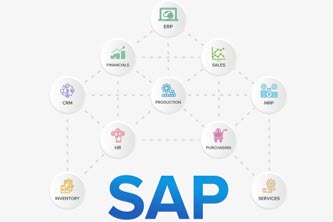How To Manage A Remote Team
by Michael Management
 With every passing day, working remotely becomes more common and acceptable. Soon, it might even be considered the norm.
With every passing day, working remotely becomes more common and acceptable. Soon, it might even be considered the norm.
In part, this is due to the worldwide efforts to contain the novel corona virus, but it’s also an extension of a trend made possible by the internet and world connectivity.
Working in the cloud anywhere, anytime, across time zones, has enormous appeal for almost everybody, even if there’s not a killer virus knocking at the door.
The problem is, how can remote team members coordinate well enough to meet productivity goals? Doesn’t everybody have to be in the same room together, hashing out ideas, coordinating efforts?
Nah.
The internet makes the world our room.
No walls, no limits, no shoes required.
However, that doesn’t mean professionalism can fly out the window. Managing a remote team requires a new strategy, but we promise shoes indeed are unnecessary.
5 Tips for Successfully Coordinating a Remote Team
- Communicate a lot, including daily group check-ins
- Set clear goals, boundaries, and expectations
- Use the right technology and make sure everyone is trained well on it
- Forget that micromanaging stuff
- Be flexible and comfortable embracing change
Frequent, Easy Communication is Key
Part of the reason why operating together in the same office space worked so well is that all one has to do to communicate is holler across the room. Of course, all that hollering could be a bit annoying too, but we won’t go into that now.
Communication is still as relevant, today we just employ slightly more sophisticated methods.
Communicating via the internet, email, Skype, Google Hangouts, video calls, instant messaging, texting, chat - my goodness, there are more ways to holler across our world-sized room than you can imagine.
Daily check-in conference calls for the distributed team, same time, same place, same format - a quick in and out, keeps everybody on the same page without having to be face to face, reporting results in real-time. Successful remote companies know how replace the physical water cooler with a virtual one and support team bonding via tech tools. Which brings me to the next step in making it work.
Set Clear Goals, Boundaries, and Expectations
Just like with managing a team in the same office, managing a team remotely means everybody knows what they’re supposed to do, when, why, and how.
Make sure everybody who works from home knows exactly what they are supposed to do, how they need to collaborate, what the goals are, and when it all needs to be done. A little extra effort and basic project management and communication skills will keep your team working.
This information is all-important - it is the heart of what you are trying to accomplish, so it needs to be made emphatically clear.
All tasks, assignments, deadlines, and expectations should be discussed in group meetings and also written down where all have easy access.
In old fashioned offices, they used a giant whiteboard everybody consulted a thousand times a day, but today, we have fancier technology, which brings me to the next step.
Use The Right Technology And Make Sure Everyone Is Trained Well On It
Your choices here are virtually endless. That alone has it’s good points and bad points. Choice means you can find something precisely suited to your needs, but it can also drive people a bit batty to have to learn and keep track of 50 gazillion apps.
Generally, it’s probably a good idea to stick with the standard tools like Google Apps, Microsoft Office, or those people already know and use.
It’s best to find a system that consolidates everything into one place. There are a lot of industry-specific tools available that can be customized so perfectly to what you need, and can far outperform a standard generic tool, so as a manager, a little due diligence and research are required to find the right tool.
Whatever you choose, make sure everyone truly knows how to use it to its full capacity. Don’t assume they do already. Ask. Provide some training.
Digital organizational tools can be real time-savers, but if someone does not know what they’re doing, they can also be horrible time wasters.
People working remotely can feel isolated, which can lead to a lot of frustration and downtime unless they feel supported, which includes adequate training on whatever tools they need to use to get the job done.
Forget That Micromanaging Stuff
Even though, as a supervisor, you have to run a tight ship, there’s no way you can micromanage a remote team like you could in the good old days of shared office space. Which is good overall since micromanaging can be quite destructive.
Concentrate on what gets done within more substantial blocks of time. If Bob gets it done at 3 a.m. your time, that’s ok. Let people work in their own way.
Assuming you have quality people who care, the job will get done. You don’t need to hover.
Which brings me to the final point!
Be Flexible And Comfortable Embracing Change
The world is changing faster than a pig sliding down a hill of grease. To keep up with it all, we have to be flexible and willing to try new things. Remote work is here to stay.
Even if they develop a cure for the corona virus tomorrow, remote work is easier on the environment, and most people apparently enjoy it. No more wasted hours staring at an endless line of bumpers ahead of you on the freeway. Remote workers can be less expensive for companies because they don’t have to maintain office space.
Those are all changes for the better, even if the new ways seem odd and unproductive at first. Taking the good with the bad, concentrating on the good, and making it all work is our new motto. We wish you much success.
Online SAP Training For Your Team
We at Michael Management enjoy bringing you working tips articles like this one on managing remote teams.
If you’re interested in online SAP training, live SAP access to SAP sandboxes, or general SAP information, please contact us here at Michael Management for all your SAP training needs.
by Michael Management
More Blogs by Michael Management

How to Start a Career in SAP Inventory Management
SAP inventory management is an in-demand skill set from large companie...

Related Blogs

How to Be a Better Remote Manager
Working from home has become massively popular due to the coronavirus ...

Remote Work Is Here To Stay
When the edict came down to limit social contact and avoid groups of m...

The Job Seekers Guide to Learning SAP
For most people, SAP job hunting is right up there with a root canal. But like...
.png)


